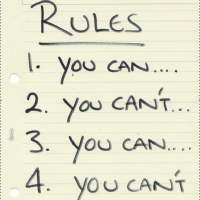
Rules, Homes, and a Big Decision
BREAKING A WELL-KNOWN RULE
luke-duke (1206) - bagpiper123456 (1198), chess.com (14 days per move), 2012
1.e4 e5 2.Nf3 Nc6 3.Bb5 a6
Here White usually plays 4.Ba4, keeping the tension. However, the Exchange Variation (4.Bxc6) also had/has many devotees – Emanuel Lasker won many fine games on the white side, Fischer brought it back to life in the 60s, and after that just about everyone gave it a go.
4.Bxc6 bxc6
This seems natural since it follows the age-old rule, “Always capture towards the center.” So, to his credit, bagpiper (rated 1198) followed the rule and was most likely sure that this was the correct decision. But, it’s not! How can that be? Why is 4...bxc6 virtually ignored by chess professionals?
Let’s first answer with a very basic, philosophical perspective: When White chops on c6 he is relinquishing the two Bishops, and as we all know, Bishops needs open diagonals to be effective.
On the other hand (if Black recaptures with the d-pawn), White creates a structural advantage since if he can exchange his d-pawn for black’s e-pawn (e.g., 5.d4 exd4 6.Qxd4 Qxd4 7.Nxd4), he’ll enjoy a nice 4 healthy pawns vs. 3 on the kingside/center, while black’s 4 vs. 3 majority on the queenside is crippled.
5.Nxe5
The most common move is the flexible 5.0-0 d6 (5…Qf6!? tries to avoid the tempo down transposition) 6.d4, which isn’t a surprise. Why not get the King to safety and the Rook primed and ready for battle before opening up the center? Another nice thing about 5.0-0 d6 6.d4 is it leads to a popular position in the Steinitz Variation, but with White enjoying a full extra tempo over that line: 1.e4 e5 2.Nf3 Nc6 3.Bb5 a6 4.Ba4 d6 5.Bxc6+ bxc6 6.d4. Here’s a visual comparison:
This alone is a compelling argument against 4...bxc6. Why would anyone want to enter a known line (which is considered to be a little better for White) a full move down?
After 5.Nxe5 Black really needs to get his pawn back. The only good ways to try and do this are 5…Qe7 and 5…Qg5 (though both probably give White some advantage):
5…Qe7
5…Qg5
In our amateur game ( luke-duke (1206) - bagpiper123456 (1198), chess.com (14 days per move), 2012), the correct moves were nowhere to be seen, and soon things became a mess:
FINDING A HOME
In the chess puzzle that follows, Black's played a poor opening and now has to move his Knight. But where?
COULD I, WOULD I, SHOULD I
Should White take on f5 with his Knight, his Bishop, or should he just leave black’s f5-Knight alone?
Lessons From These Examples
* Though the rule “Always capture towards the center” is useful, it’s certainly not something you should blindly follow.
* If you manage to create an early imbalance (in the case of our first example, Two Bishops and Knight vs. Bishop and Two Knights), Make the Pawn Structure Conform to (and hopefully complement) the Imbalances!
* Just because your lizard brain is telling you to move something doesn’t mean you should do it!
* A Knight on the 6th rank (if it can remain there) is usually better than a Bishop, and is sometimes as good as a Rook!
HOW TO PRESENT A GAME FOR CONSIDERATION
If you want me to look over your game, send it to askjeremy@chess.com
I need your name (real or chess.com handle), your OPPONENT’S name (real or chess.com handle), both player's ratings, where the game was played, and date. If you don’t give me this information, I won’t use your game! BTW: I’ve noticed that many people are reluctant to give me their opponent’s name. This is very strange! Showing the names of both players is the way chess games are presented in databases, books, magazines… everywhere! Permission from the opponent isn’t necessary. If permission was necessary, everyone who ever lost a game wouldn’t allow their name to be on it!






